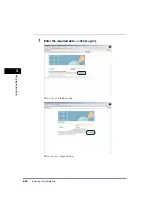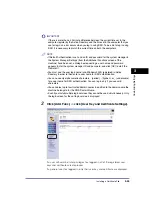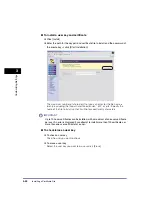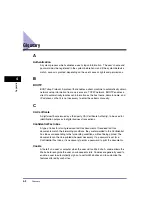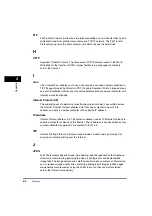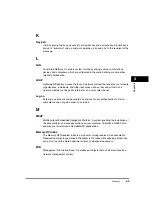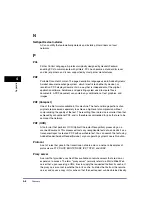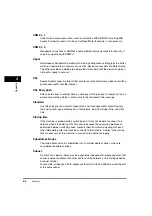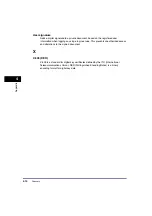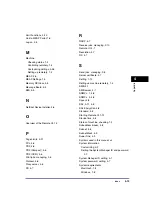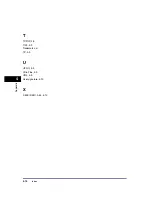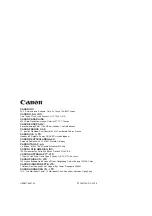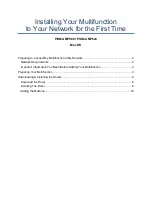
Glossary
4-9
4
Appendix
Subnet Mask
The method used to determine to which subgroup, or subnet, an IP address belongs.
On TCP/IP networks, all devices whose IP addresses have the same prefix belong to
the same subnet. Dividing a network into subnets is useful for both security and
performance reasons.
Super Fine
A resolution mode for sending originals at four times the detail of the Standard
resolution mode. If the receiving machine does not support this mode, the document
is automatically sent in the Fine mode.
T
TCP/IP
Transmission Control Protocol/Internet Protocol. The protocol used to connect to the
Internet or wide area networks.
TIFF
Tagged Image File Format. A file format that saves images as high-density bitmaps,
and is suitable for large amounts of image data. The information field (tag) at the start
of each image data record indicates the type of data represented.
TX
Abbreviation for "Transmission/Sending."
U
UFR II
Ultra Fast Rendering II. A printing algorithm for realizing high-speed rendering. UFR II
enables processing tasks to be executed and divided appropriately between the host
PC and the printer to greatly reduce overall printing time.
Ultra Fine
A resolution mode for sending originals at 16 dots/mm x 15.4 lines/mm (eight times
the standard resolution). If the receiving machine does not support this mode, the
original is automatically sent in the Super Fine or Fine mode.
URL
Uniform Resource Locator. A standard way of specifying the location of an object,
usually a Web page on the Internet. The URL for a Web page would look something
like this: "http://www.w3.org/default.htm". Here, "http:" indicates that a Web page is
being accessed, "www.w3.org" is the address of the server containing the Web page,
and "default.html" is the file name under which the Web page is stored on the server.




